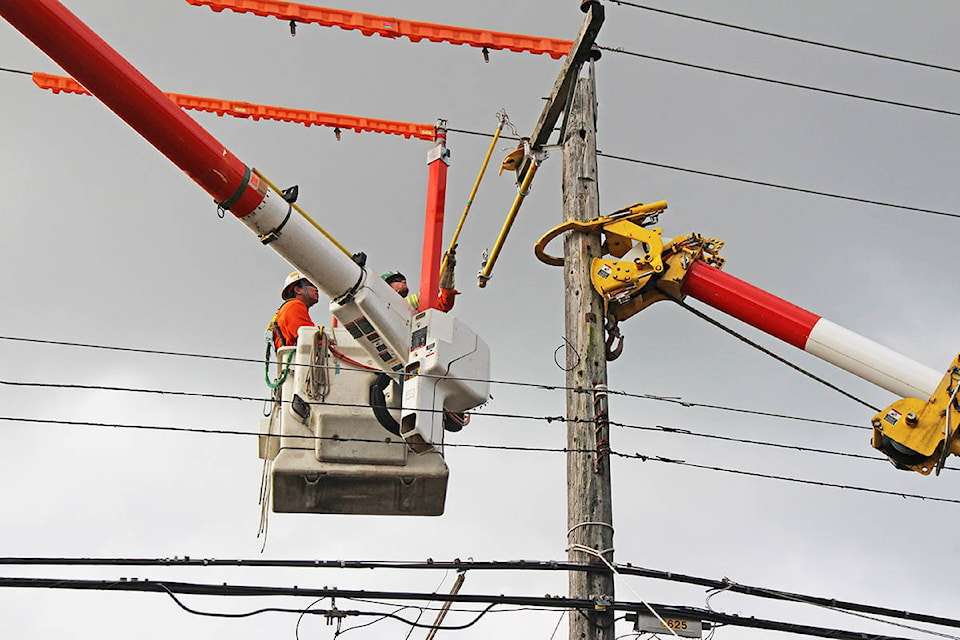It was the worst windstorm to hit the North Island in recent memory, and the devastation it brought was a sharp reminder for residents to always be prepared for emergency situations.
The storm made its presence known on Tuesday afternoon (Nov. 17), causing trees and branches to break and fall, damaging power lines and creating massive outages for well over 6,000 customers who live in the Mount Waddington region.
RELATED: Over 5,000 customers affected by North Island power outage
RELATED: Power is back on in the North Island
Ted Olynyk, BC Hydro’s Manager for Community Relations Vancouver Island-Sunshine Coast, noted the company moved their crews “as quickly as we could to help the North Island out… We moved all of our contract crews up from Southern Vancouver Island to work on the restoration efforts.”
Olynyk added the crews were working 16 hour days in bad weather conditions to get the power back on, and that once an area was fixed, the crews were then moved to other areas that were in need of help.
What area was hit the worst by the windstorm, you might be wondering?
“The storm hit the entire North Island quite hard,” said Olynyk, who then stated Zeballos and Port Alice went the longest without power. “Transmissions lines were down and damaged. While transmission crews were working on the transmission lines, distribution crews were making repairs to the distribution lines, so when the transmission lines were ready, everything would come on right away.”
He added that while Port Alice’s distribution lines were generally okay, the transmission lines “needed major repairs which is why the power was out there longer than other areas.”
BC Hydro runs one transmission line to the Northern Vancouver Island region so there was no backup line available.
When asked if a second transmission line would be beneficial for the North Island, Olynyk stated the area is very similar to Lake Cowichan and West Vancouver Island. “There’s only one way to get power up there and the possibility of damage [to a second transmission line] would still exist.”
BC Hydro noted in a news release that the severity and frequency of storms causing damage to BC Hydro’s electric system is increasing and there has been a 117 per cent increase in these storms over the past several years.
“At the end of the day mother nature lets us know who is in charge,” stated Olynyk, who then pointed out climate change has caused storms to become more frequent and more intense.
Due to this, BC Hydro will be investing in vegetation management to “lessen the impact on our customers,” stated Olynyk. “We know that living on the West Coast we can never get rid of outages completely, but we are really striving to lessen the impact from outages and also make them less frequent.”
Above all else, Olynyk said BC Hydro appreciates “our customer’s patience during major events like this, and the feedback we received for our crews’ efforts was very heartwarming.”
@NIGazette
editor@northislandgazette.com
Like us on Facebook and follow us on Twitter
